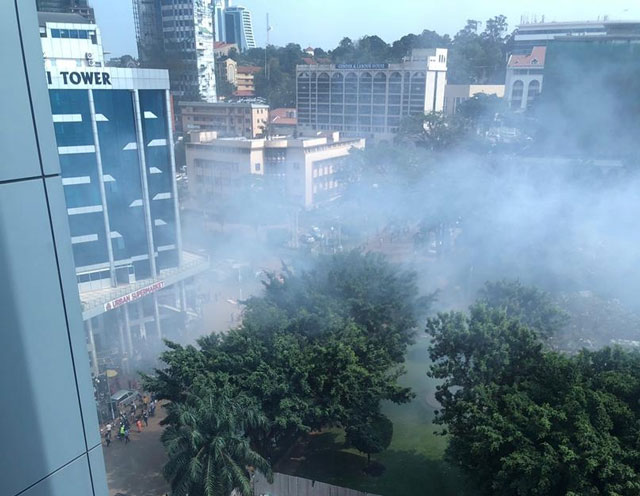
Museveni reveals chemicals used to make the two explosives in Kampala
A suicide bomber that was captured on Closed Circuit Television (CCTV) cameras is said to have detonated a bomb he was carrying in a backpack at 10:03am at the quarter guard of Kampala Central Police Station (CPS) killing one policeman on the spot and injuring 22 others.
Three minutes later, another bomb was detonated outside the office of Inspector General of Government (IGG) leaving one person dead. One of the victims died several hours later thus bringing the number of deaths to seven including three suicide bombers.
Museveni, who was addressing the country on the COVID-19 status and security on Saturday evening, indicated that forensic experts examined a bomb that was diffused in Katooke, Nansana Municipality and it has since been revealed petrol and ammonium nitrate are being used to make these Improvised Explosive Devices (IEDs).
“The one at CPS and IGG offices were mixed with petrol and ammonium nitrate. This is why some people confused them with C4 grenades which are owned by military. But its these hydrocarbons that would make them appear like C4 grenades. We shall track the source of these explosives,” said Museveni.
Ammonium nitrate is used to make fertilizers, while petroleum products are accessible everywhere. In the explosions, forensic and bomb squad teams have identified ball bearings, nails as some of the shrapnel mixed with ammonium nitrate and petrol to make these IEDs.
Even though an internationally recognized terror group the Islamic State claimed responsibility for Tuesday bombs like it did for Komamboga and Swift Bus explosions in October, Museveni insists that the suicide bombers are remnants of Allied Democratic Forces (ADF) rebel cells.
“The most important thing is not to take precaution against exploders but to uproot everybody who has an idea. That is why we are not going to listen to anybody talking about court bail. My only advice to ADF is to surrender. We defeated ADF when we did not have this capacity and we are adding capacity,” added Museveni.
ADF is a rebel outfit that started in 1990s under the command of Jamil Mukulu who has been in government custody for over six years now. But his remnants are said to have split and one group joined Islamic State.
Security sources earlier informed Uganda Radio Network (URN) that there were over 120 ADF terror suspects on wanted list. This is why security has been able to name the suicide bombers within hours after the incidents.
In his Saturday evening address, Museveni wondered why police does not publicize the whole list so that the bad elements can be known by everyone as wanted persons. Security named the suicide bomber inside Swift Bus as Isaac Matovu while those who bombed CPS and IGG office were identified as Musa Mudasir, Abdullah Wanjusi and Mansoor Uthman.
The President also revealed that 12 ADF terror members have been killed since the June 1st attack on works and transport minister Gen. Edward Katumba Wamala an incident that left his daughter Brenda Nantongo and his driver Sgt Haruna Kayondo killed in a volley of ammunitions.
The post Security identifies material used to make Kampala bombs appeared first on The Independent Uganda:.
from The Independent Uganda: https://ift.tt/3xal10j
0 Comments